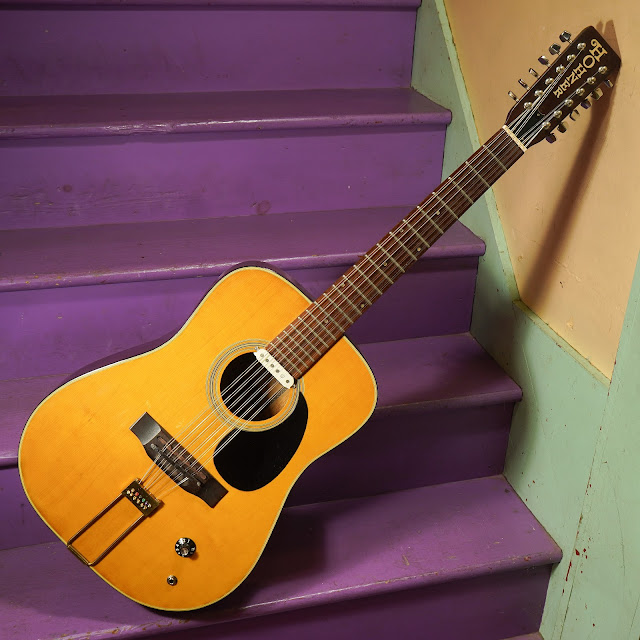1978 Hohner HG-12 Electrified Dreadnought 12-String Guitar
This delightful weirdo started-off as a cheap pity-purchase guitar. It needed a neck reset and "the usual stuff." I gave it the neck reset and the level/dress of the frets it most-severely needed and then did the extra to make it interesting.
First of all, I fit a tailpiece to it (it's a salvaged tenor guitar tailpiece with holes drilled to mount the 12-string format) and then cut a wide, fully-compensated rosewood saddle to fit into the old "adjustable saddle" bridge slot. It's compensated for electric 12-string gauges which use a plain G for the lower octave of the G course. Currently it's wearing gauges 42w-9 in nickel. The bridge holes for the pins were filled and I used the old adjustable saddle -- flipped upside-down -- as a "downpressure bar" or "string tree" to give a little more break-angle over the saddle itself with the strings.
Next-up, I installed a traditional-style, Alnico-poles, Strat pickup. I'm pretty sure it's a GFS model? I then wired that to a simple volume control and output jack, with grounding at the tailpiece.
The resulting acoustic-electric plays really fast after all the work, is fun to strum on or point a mic at for acoustic work, but also sounds jangly and rich plugged into an electric amp. It reminds me a lot of the sound of a magnetic pickup in a Greek bouzouki's soundhole (as is popular) on the DGBE courses -- or maybe like the electric sound often heard from Cuban tresoros.
The guitar itself is Korean-made, late '70s, all-ply throughout, and the stamps inside suggest '78 manufacture.
Full specs and measurements soon!

















Comments